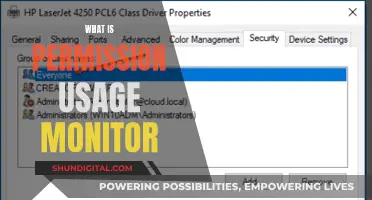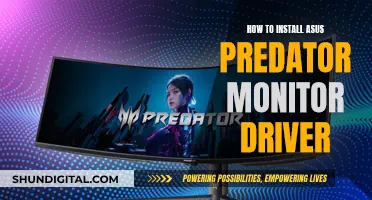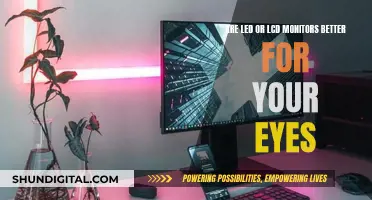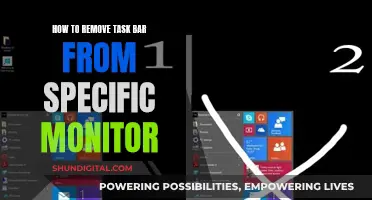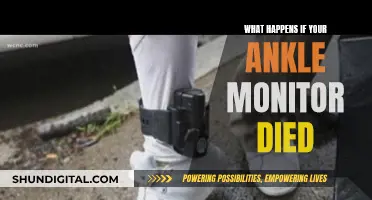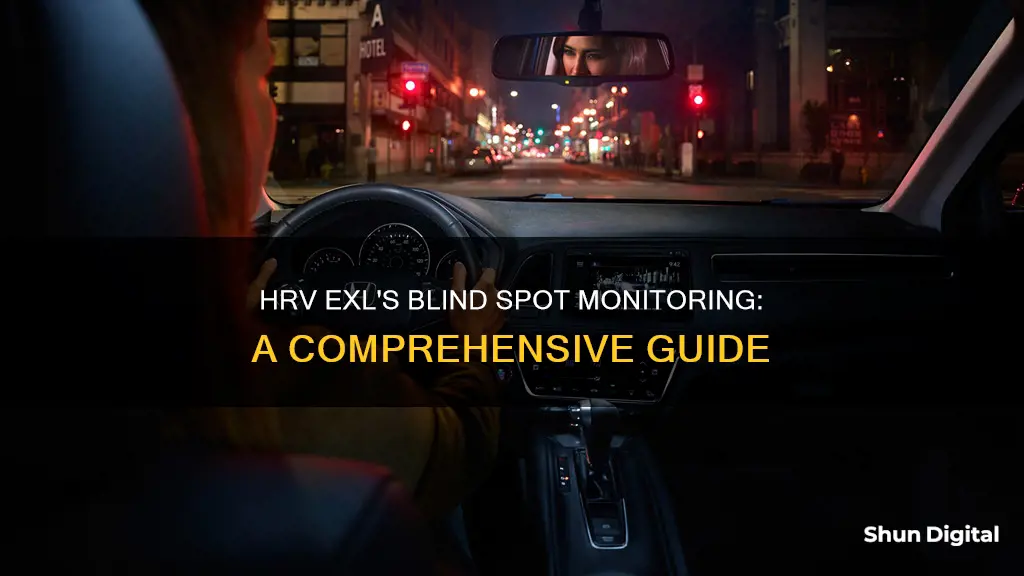
The Honda HR-V is a compact SUV that offers a range of safety features to maximize protection for drivers. One of these features is the Blind Spot Information System (BSI), which is available on the Sport and EX-L trims. This system uses radar sensors to detect vehicles in the driver's blind spot, providing both visual and audible alerts to help avoid potential collisions when changing lanes or merging on busy highways. While the BSI is designed to enhance driving confidence, it is not a substitute for the driver's own visual assessment before changing lanes. There have been reports of the BSI being dropped from the upcoming production of the HRV-EXL due to chip shortages, but it is unclear if this will affect all 2024 models.
| Characteristics | Values |
|---|---|
| Vehicle Name | Honda HR-V |
| Model | EX-L |
| Year | 2023, 2024 |
| Blind Spot Monitoring | Available as a Honda Sensing® feature |
What You'll Learn
- Honda Sensing®: a suite of safety systems for enhanced awareness
- Visual and audible alerts when a car enters your blind spot
- Sensors on rear corners detect vehicles in adjacent lanes
- Indicator illuminates in side mirrors when alerts are triggered
- System accuracy varies based on weather, object size, and speed

Honda Sensing®: a suite of safety systems for enhanced awareness
The 2024 Honda HR-V is a compact SUV that maximizes safety for drivers. Honda has been at the forefront of automotive safety, and the new HR-V is no exception. Each 2024 HR-V comes equipped with Honda Sensing®, a suite of enhanced safety systems designed to provide peace of mind and improve awareness on the road.
The Blind Spot Information System (BSI) is a notable feature of the Honda Sensing® suite. BSI provides drivers with additional information about conditions on both sides of the vehicle, enhancing driving confidence. A pair of sensors, one on each rear corner of the HR-V, detect vehicles in adjacent lanes and alert the driver through visual and audible indicators. This system is particularly useful when changing lanes or merging on busy highways, as it helps drivers steer clear of potential collisions.
The Lane Keeping Assist System is another key feature of Honda Sensing®. This system simplifies highway driving by gently adjusting the steering to keep the vehicle centred within a detected lane, as long as the driver's hands are on the wheel. This feature is handy in traffic or during leisurely drives on open roads.
The Collision Mitigation Braking System™ is a sophisticated safety feature that provides warnings and backup during potential collisions with detected vehicles or pedestrians ahead. If the system senses an imminent and unavoidable collision, it automatically applies brake pressure to reduce the impact and protect the driver and passengers.
The Honda Sensing® suite also includes a Road Departure Mitigation System, Forward Collision Warning, Lane Departure Warning, Traffic Jam Assist, Traffic Sign Recognition, and Auto High-Beam Headlights. These features work together to provide drivers with enhanced awareness and peace of mind while on the road.
Monitoring Your Dryer's Electricity Usage: A Step-by-Step Guide
You may want to see also

Visual and audible alerts when a car enters your blind spot
The Honda HR-V EXL comes equipped with a Blind Spot Information System (BSI) that provides visual and audible alerts when a car enters your blind spot. This innovative feature boosts your confidence and keeps you and your passengers as safe as possible.
When a vehicle enters your blind spot, the BSI system illuminates a warning icon in your side mirrors or on the front pillars next to the driver's window. This visual alert is designed to catch your attention and warn you of a potential hazard. Additionally, if you engage your turn signal while a vehicle is in your blind spot, the system may provide an audible warning, such as a beeping sound, to further emphasise the presence of the vehicle.
The BSI system in the HR-V EXL uses sensors to constantly monitor the road to your sides and is optimised for highway driving and highway speeds. It is important to note that the system may not detect all objects, especially at slower or faster speeds, and should not be solely relied upon. Drivers should always visually check their blind spots and use turn signals before changing lanes.
While the BSI system in the HR-V EXL provides valuable assistance, it is essential to remember that it does not replace the driver's responsibility to safely operate the vehicle and avoid collisions. By combining the BSI system with proper driving techniques, you can enhance your awareness of surrounding traffic and make safer lane changes.
Some users have expressed disappointment with the absence of an audible alert in the HR-V EXL's BSI system, preferring the added layer of warning provided by a beeping sound. However, others appreciate the balance of a visual alert without the potential distraction of frequent loud alarms. Ultimately, the effectiveness of the BSI system depends on individual preferences and driving habits.
How Monitor Size Impacts Website Viewing Experience
You may want to see also

Sensors on rear corners detect vehicles in adjacent lanes
The 2024 Honda HR-V is a compact SUV that offers an array of advanced safety features, including the innovative Blind Spot Information System (BSI). This system is designed to enhance your driving confidence by providing valuable information about conditions on both sides of the vehicle.
The BSI utilises a pair of sensors strategically placed on each rear corner of the HR-V. These sensors are the cornerstone of the system, as they are responsible for detecting vehicles in adjacent lanes, which are typically in the driver's blind spot. By doing so, the BSI provides drivers with an extra layer of awareness, enabling them to make more informed decisions when changing lanes or merging on busy highways.
When the HR-V is moving forward at approximately 20 mph or above, the sensors come into play. If a vehicle is detected in the adjacent lane, the BSI springs into action, triggering an indicator located in the corresponding side mirror to illuminate. This visual alert serves as a warning, prompting the driver to use caution and potentially avoid a collision.
The alert zones of the BSI are carefully calibrated. Initially, they extend from 1.6 to 10 feet from the sides of the vehicle and about 10 feet past the rear bumper. However, the system is adaptive and intelligent. As the vehicle is driven more frequently on straight roads with traffic and roadside objects, the BSI will adjust and extend the alert zone by an additional 82 feet back, ensuring a more comprehensive coverage area.
It is important to note that while the BSI is a valuable safety feature, it should not replace the driver's own visual assessment before changing lanes. The system may not detect all objects, and its accuracy can vary based on factors such as weather conditions, object size, and speed. Ultimately, the driver remains responsible for safely operating the vehicle and avoiding collisions.
Unlocking 144Hz: Setting Up Your ASUS Monitor for Smoothness
You may want to see also

Indicator illuminates in side mirrors when alerts are triggered
The 2024 Honda HR-V is a compact SUV that comes with a host of safety features, including the innovative Blind Spot Information System (BSI). This system is designed to enhance your driving confidence by providing additional information about conditions on both sides of the vehicle.
The BSI utilises a pair of sensors, strategically placed on each rear corner of the HR-V, to detect vehicles in adjacent lanes. When the vehicle is moving forward at approximately 20 mph or above, and the system detects a car in your blind spot, an indicator located in each side mirror illuminates to alert you. This visual alert is accompanied by an audible alert to ensure you're aware of the potential hazard.
The alert zones of the BSI are customisable, initially extending from 1.6 to 10 feet from the sides of the vehicle and about 10 feet past the rear bumper. However, as you drive more on straight roads with traffic and roadside objects, the system adapts and extends the alert zone by another 82 feet back. This dynamic adjustment ensures that you're informed about vehicles or objects in your blind spot, even when driving on varied road conditions.
It's important to note that while the BSI is a valuable safety feature, it should not replace your own visual assessment before changing lanes. The system may not detect all objects, and its accuracy can vary based on weather conditions, object size, and speed. As the driver, you are still responsible for safely operating the vehicle and avoiding collisions.
Buying Monitor Lizards: A Beginner's Guide
You may want to see also

System accuracy varies based on weather, object size, and speed
The accuracy of the blind spot monitoring system in the Honda HR-V EX-L is influenced by various factors, including weather conditions, the size of objects in the vehicle's vicinity, and their relative speed. These variables can impact the system's performance and the information it presents to the driver.
During adverse weather conditions, such as heavy rain, snow, or dense fog, the accuracy of the blind spot monitoring system may be compromised. Inclement weather can hinder the sensors' ability to detect and track objects accurately. The system may provide delayed or less precise information, or in some cases, it might not detect objects at all. This is because adverse weather conditions can create additional challenges for object detection and clarity.
Object size also plays a crucial role in the system's accuracy. Smaller objects, such as motorcycles, bicycles, or pedestrians, may be more challenging for the system to detect accurately. The sensors might struggle to identify them due to their reduced radar cross-section, which can lead to less reliable information or even non-detection.
Relative speed is another important factor. The blind spot monitoring system performs more effectively when objects are moving at similar speeds to the HR-V EX-L. Rapidly approaching objects from behind or those moving significantly slower may decrease the system's accuracy. The relative speed creates a dynamic scenario that can affect sensor interpretation.
Additionally, the vehicle's speed can impact the system's accuracy. Higher speeds may result in a larger buffer zone, while lower speeds or tight maneuvers can affect sensor detection range and positioning accuracy. Understanding the limitations of the system and remaining vigilant, despite its assistance, is crucial for driver safety.
Simple Ways to Check if Your Monitor Runs 2K
You may want to see also
Frequently asked questions
Yes, the 2024 Honda HR-V EX-L model has a blind spot information system (BSI) that uses radar sensors to detect vehicles in the driver's blind spot.
The system uses a pair of sensors, one on each rear corner of the HR-V, to detect vehicles in adjacent lanes. When a vehicle is detected, an indicator in the corresponding side mirror illuminates to alert the driver. If the turn signal is on in the direction of a detected object, the indicator flashes, and an alert sounds.
No, the blind spot information system is not a substitute for the driver's own visual assessment before changing lanes. The system may not detect all objects, and its accuracy varies based on weather conditions, object size, and speed. The driver is ultimately responsible for safely operating the vehicle and avoiding collisions.


